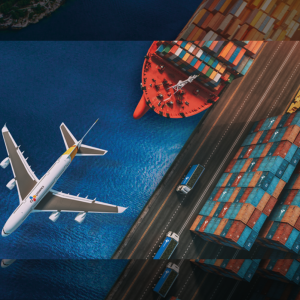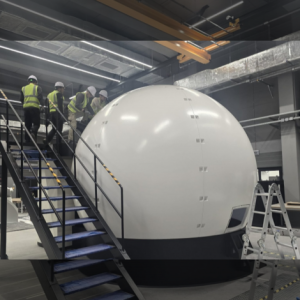
Can you believe there was a time when it took a whole week or longer to receive a delivery? It’s hard to imagine since nowadays, next-day and even same-day delivery are commonplace. However, these rapid delivery systems didn’t spring up overnight. In this story, CJ Newsroom explores major changes in the logistics industry, how it has transitioned to and implemented ultra-fast delivery, its rapidly-evolving model and the intense market competition unfolding around the world.
The Impacts of COVID-19 on the Logistics Industry
The way we live our day-to-day lives has drastically changed since the introduction of COVID-19. In particular, the pandemic has caused a tremendous upheaval in the logistics industry. After the first outbreak, demand increased significantly, resulting in unthinkable problems during the distribution process. Container freight rates also increased anywhere from three to eight times the normal rates.
So, what does the situation look like now that restrictions have eased and South Korea has entered its “Living with COVID-19” stage? Because logistics is such a gigantic system, it is almost impossible to solve all of its problems at once. Previously, it was possible to smoothly operate a large, global supply chain system from purchasing to delivering. However, even though the world is adapting to a new normal, securing, producing and transporting materials is still difficult. Experts predict that this phenomenon will continue into the second half of 2023.
Moving Beyond E-commerce to Q-commerce
In the early days of COVID-19, online sales exploded due to spending more time indoors. This led to a boom in the e-commerce industry, which had been steadily growing even before the pandemic.
In fact, e-commerce was first launched in the early 2000s, failed, and then grew again in the 2010s. The reason for e-commerce’s growth was largely the fast-paced and efficiency-driven needs of modern society. Today, next-day or same-day delivery is so common that customers have grown to expect it. Now, there is a new concept called quick commerce, or q-commerce, which goes beyond same-day delivery to offer delivery within one to two hours of placing an order. For example, Amazon offers a quick commerce service for specific items that can be delivered to customers within an hour after ordering.
E-fulfillment, an Optimal Logistics Solution
Delivery services are at the heart of the logistics market. CJ Logistics is making efforts to target the last mile* delivery market by operating early morning delivery and same-day delivery. It is also exploring ways to make delivery more efficient. A good example of this is the fulfillment service provided to Naver in which the customer’s ordering, processing, shipping and delivery needs are all met.

The traditional delivery system we know is one in which the seller uploads the item on an e-commerce platform. When the item is purchased, the seller contacts the parcel, then the parcel delivers the item to the customer. On the other hand, e-fulfillment has established a quick and accurate system by not just operating between the company and the e-commerce platform, but also creating its own warehouse and securing a stable inventory. With this system, service quality is significantly increased.
Big data is essential for making the delivery process efficient as analyzing customer patterns and behavior determines the delivery priority and method. Thanks to these analytics, CJ Logistics is able to use e-fulfillment to provide optimal solutions and services to its partner, Naver Shopping.
How CJ Logistics Is Capturing the Global Market

CJ Logistics has expanded its global presence through securing the market share with its technology and industry knowledge. Moreover, the company has focused on securing local markets through M&A (mergers and acquisitions) strategy with quality companies. In 2017, CJ Logistics acquired Darcl, an Indian logistics company leading the local logistics market, and is currently establishing itself as the number one logistics company in India.
ESG in the Logistics Industry

ESG management has become essential in every industry. The logistics industry is no different and has positioned itself as one of the leading industries in ESG management. More specifically, companies have set out to reduce environmental pollution and pollutants that occur during logistics processes. Consequently, CJ Logistics is converting its delivery fleet to electric vehicles in an effort to reduce C0₂ and greenhouse gas emissions.
Moreover, the zero-waste movement is steadily gaining attention. Accordingly, CJ Logistics is striving to utilize eco-friendly materials in its packaging such as paper buffering, labels and tape as well as optimizing box sizes to better suit their contents.
We now live in an era of smart logistics where robots deliver parcels and items are sorted by artificial intelligence (AI), but what’s next? What capabilities and solutions will be developed in the logistics industry? Whatever lies ahead, customers can look forward to CJ Logistics’ future as it continues to be a company leading the logistics industry and providing unique solutions through its accumulated knowledge and technology.
*Last mile: The last step of the shipping process where goods are delivered to the final customers











